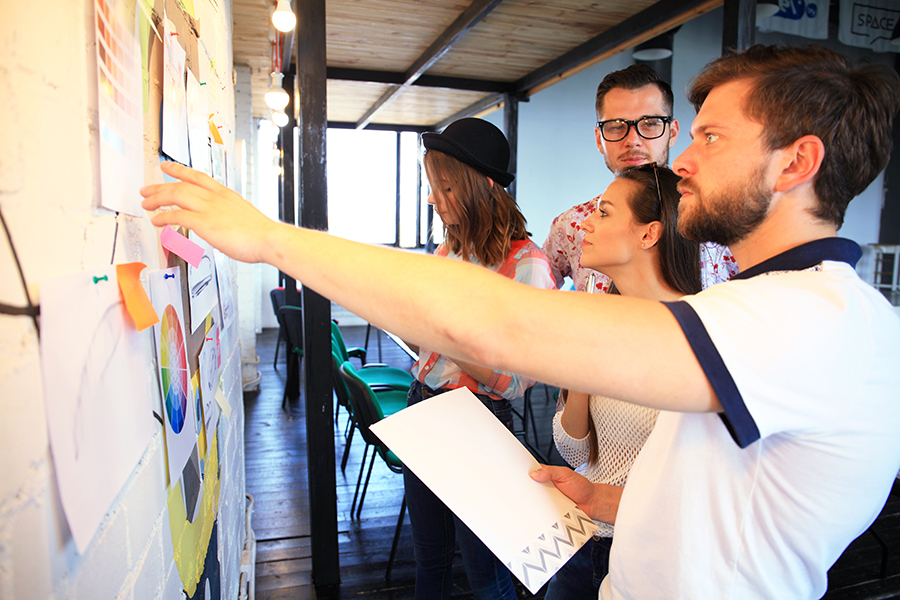Design Thinking + Visualising
By Lianne van Genugten, Senior Design Thinking Consultant
In the coming time we will cover several disciplines in which visualization plays a role. In this article, Lianne van Genugten shows how Design Thinking can help deal with complicated changes for organizations.
- The steps of a Design Thinking process
- Visualization as a universal language
- From brainstorm to action
The world around us is changing rapidly. Technological developments follow each other constantly, globalization ensures that customers can purchase their products from all over the world. And meanwhile, we are facing major challenges such as climate change and major pandemics.
As Jan Rotmans says, “We are not in an era of change, but in a change of era.
Design thinking: a new way of working
Design Thinking helps organizations deal with change and all the complex processes involved. Designers think in solutions and opportunities by letting go of frameworks. They are inquisitive and experimental.
They constantly zoom out to gain more insight and quickly zoom in again to explore possible opportunities. Design Thinking is playful work, and with every step you make, reflect well on what it has brought you.
The different steps in a design thinking process:
- Picture the situation and define the question.
- Empathize with the other person and the situation
- Brainstorming about new ideas
- Experiment and try out concepts quickly
- Reflecting and taking the next step
Different perspectives
A designer can help bring people into different ways of thinking and perspectives. So that the members of a project team really start to empathize with the other person’s situation and way of thinking. The purpose and question of the project becomes clear when everyone is aware of where we are now and why that has come about. This breaks open old patterns and creates space for new ideas.
Space for new ideas
It is important to literally and figuratively make space within the organization. Give team members space to gain and explore other insights. Set up a space for free brainstorming and experimenting with new ideas. On a large whiteboard wall, ideas can become visual and come to life. The bigger and wilder, the better! There is no right or wrong with this. A “failed” plan yields numerous new insights.
Visualization as a universal language
It is important that all stakeholders understand the project language. The language of visualization is much more universal and powerful than spoken language. Especially when employees from different disciplines are on a project team. Visualization, which can be beautiful drawings, but often a few simple lines are enough, sometimes supplemented with keywords.
A second advantage of visualization is that it gives a brainstorming session more dynamism and momentum.
You can learn from experimenting
After the brainstorming phase, it is important to quickly turn an idea into action, into a prototype or other form to test the concept. Don’t spend too long thinking about what could go wrong, just start experimenting, making prototypes and talking to (potential) customers. It is in doing and working with the concepts or strategies that you really learn what the ideas can bring about. Preferably in co-creation with customers or partners, so you can bring their feedback right into the process. This brings new insights to the table, allowing the session to continue. And then again; keep looking, with an open mind. Thinking beyond success and failure, but seeing what you can learn from the experiment.
Is this something only designers can do?
No, I don’t think so. Design thinking is about deferring judgment and empathizing with others. It’s about looking beyond, and thus looking around with wonder. It is about collaboration, visualization and experimentation. Just starting on a plan, developing step by step and continuing to reflect. This is something children can do very well. However, somewhere towards our adult life we have often unlearned this and started to think and work very rationally.
I believe that many people can make this way of working their own. It takes some practice and perseverance. A designer can certainly help to bring more speed and direction to a design or innovation process. After all, designers love change and complicated issues. This is another opportunity to make the world a little more beautiful.
Written by Lianne van Genugten
Senior Design Thinking Consultant, www.liannevangenugten.nl





